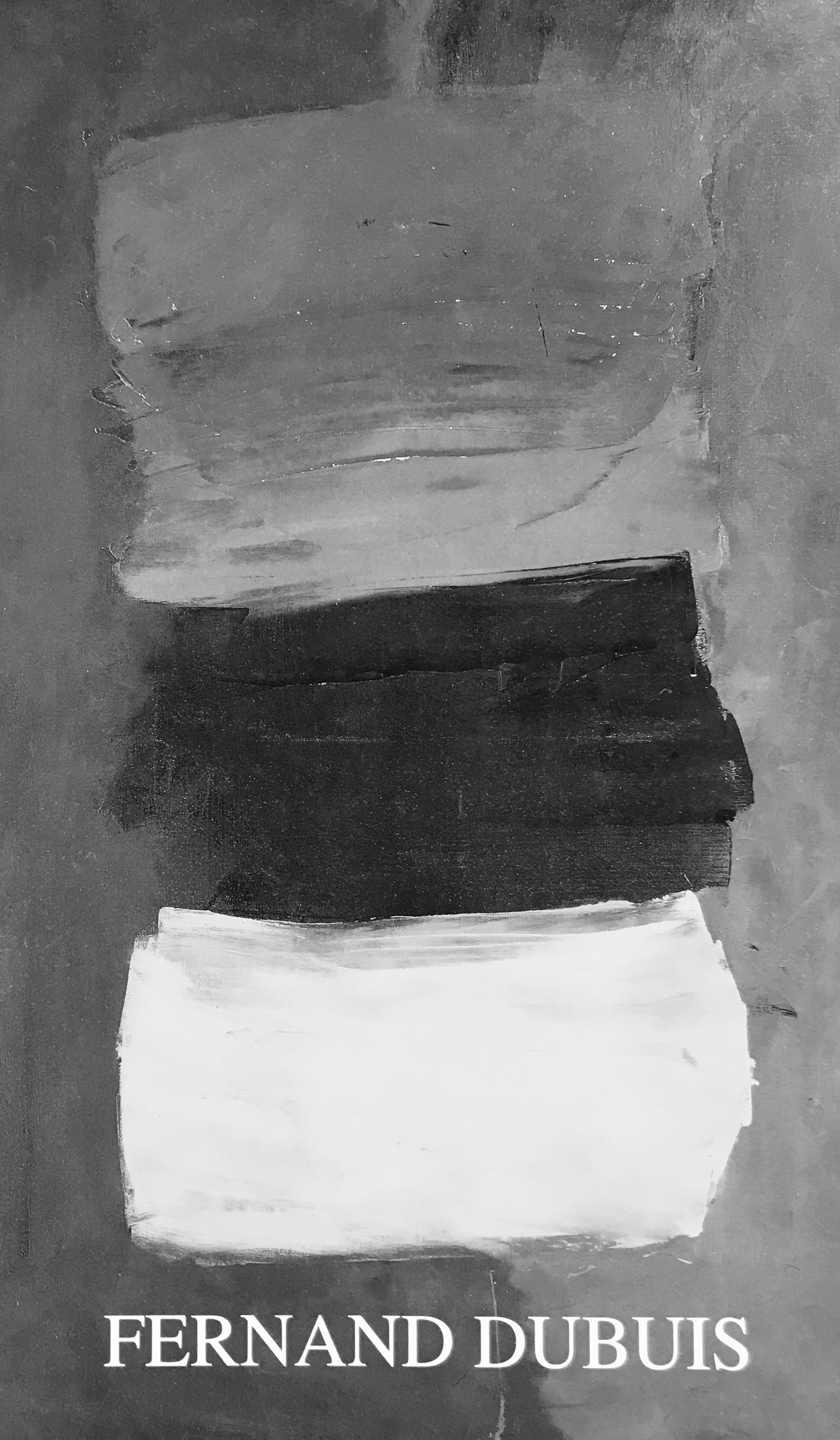Espace - Fernand Dubuis
Werk / espace - fernand dubuis / Öl auf Leinwand 1979 / B 110 x H 85 cm / gemalt im Atelier an der 10 Rue du Dragon - 6 Arrondissement, Paris / Atelier Fernand Dubuis Rue du Dragon - 6 Arrondissement, Paris - Sammlung Simone Gournay - Galerie Rene Mounir, Sion
work / espace - fernand dubuis / oil on canvas 1979 / L 43,3 x H 33,4 inch / painted in his studio at 10 Rue du Dragon - 6th Arrondissement, Paris / studio Fernand Dubuis Rue du Dragon - 6th Arrondissement, Paris - collection Simone Gournay - gallery Rene Mounir, Sion
Literatur / Maurice Zermatten, Editions de la Matze Collection / PEINTRES DE CHEZ NOUS - Exemplaire Nr. 81 de 150 - DUBUIS 1978 / Französisch
literature / Maurice Zermatten, Editions de la Matze Collection / PEINTRES DE CHEZ NOUS - Exemplaire Nr. 81 de 150 - DUBUIS 1978 / French
Literatur / Caroline Benzaria / FERNAND DUBUIS LA VIE DES COULEURS QUI NEN FONT QU UNE 1995 / Crédits photographiques - Art Photo, Denis Hayoun Genève / Französisch
literature / Caroline Benzaria / FERNAND DUBUIS LA VIE DES COULEURS QUI NEN FONT QU UNE 1995 / Crédits photographiques - Art Photo, Denis Hayoun Genève / French
Literatur / Philippe Clerc, Avant - propos de Lydia Harambourg - Fernand Dubuis, Le génie de la couleur 2021 / Französisch
literature / Philippe Clerc, Avant - propos de Lydia Harambourg - Fernand Dubuis, Le génie de la couleur 2021 / French
Werk
Das folgende Werk von Fernand Dubuis aus dem Jahre 1979 überzeugt durch eine gelungene Farbkomposition und einer intensiven Breite - Höhe und Tiefe in der Perspektive. In dieser Ölmalerei besonders hervorzuheben sind die kraftvollen Farben von welchen jede einzelne Farbkomponente einen zentralen Anziehungspunkt wiedergeben kann. Eine einfache aber wirkungsvolle Komposition von der Farben und Formen ein wenig an die Werke Pablo Picassos - Blauer Periode erinnern. Eine faszinierende Eigenschaft ist auch die spannende Auflösung und Intensität von Grün und Orange. Diese Handschrift zieht sich in einigen seiner Werke ab den 1970er Jahren bis in die 1990er Jahren hindurch, in welchem keine klare Abgrenzung zwischen einer Hauptschaffensphase und einem Spätwerk zu erkennen ist.
Fernand Dubuis
Die erste Schaffensphase in den 1930er Jahren beginnt mit seiner Niederlassung in Paris und dem Beginn des Studiums an der Académie de Ranson als Schüler im Atelier von Maurice Denis. Zunächst arbeitet Fernand Dubuis unter dem Einfluss seiner beiden Vorbildern Fernand Léger und Georges Braque. In seinen Studien und Ausstellungsjahren in Paris seit Beginn der 1930er Jahren inspirieren ihn vor allem Künstler des Kubismus wie Juan Gris. In den folgenden Jahren entwickelt sich aus dieser Inspiration ein unverwechselbarer Verstand von Raum und Formen. Auf einer künstlerischen Reise durch Italien verbringt er den Sommer 1935 in Venedig wo er die Bekanntschaft mit Albert Marquet und Raoul Dufy macht. Er entdeckt die florentinischen Museen und steigert seine Begeisterung für Farben. Seine Zeit in Italien wird ihn in seiner zweiten Schaffensphase ab den späten 1950er Jahren massgeblich beeinflussen. Nach dem Studium an der Académie de la Grande Chaumière in Paris kehrt er über die Kriegsjahre nach Genf zurück. Nach dem zweiten Weltkrieg bezieht er abwechslungsweise Ateliers im Château du Tertre in der Normandie und an der Rue du Dragon - 6 Arrondissement in Paris, wo die meisten Werke entstehen werden.
Literatur
Philippe Clerc, Avant - propos de Lydia Harambourg / Fernand Dubuis, Le génie de la couleur 2021 / Französisch
Caroline Benzaria / FERNAND DUBUIS LA VIE DES COULEURS QUI NEN FONT QU UNE 1995 / Crédits photographiques - Art Photo, Denis Hayoun Genève / Französisch
Maurice Zermatten, Editions de la Matze Collection / PEINTRES DE CHEZ NOUS - Exemplaire Nr. 81 de 150 - DUBUIS 1978 / Französisch
art work
The following work by Fernand Dubuis from 1979 impresses with its successful color composition and intense width - height and depth in perspective. In this oil painting, each individual and powerful color component can reflect a central point of attraction. A simple - eye catching composition whose colors and formes are remembering the works of Pablo Picasso's - Blue Period. Another fascinating feature is the exciting resolution and intensity of green and orange. This signature runs through some of his works from the 1970s to the 1990s, in which no clear distinction can be seen between his main creative phase and his late work.
Fernand Dubuis
The first creative phase in the 1930s begins with his settlement in Paris and his studies at the Académie de Ranson as a student in Maurice Denis' studio. Initially Fernand Dubuis workes under the influence of Fernand Léger and Georges Braque. In his studies and exhibition years in Paris since the 1930s he is particularly inspired by cubists such as Juan Gris. In the following years he is developing a distinctive understanding of space and forms. On an artistic trip through Italy he spends the summer months of 1935 in Venice where he meets Albert Marquet and Raoul Dufy. He discovers the Florentine Museums and increases his enthusiasm for colors. His time in Italy would have a significant influence on his second creative phase from the late 1950s onwards. After completing his studies at the Académie de la Grande Chaumière in Paris he returns to Geneva. After the Second World War he is commuting between his studios at Château du Tertre in Normandy and Rue du Dragon - 6 Arrondissement in Paris where he is going to paint most of his works in his second creative phase.
literature
Philippe Clerc, Avant - propos de Lydia Harambourg / Fernand Dubuis, Le génie de la couleur 2021 / French
Caroline Benzaria / FERNAND DUBUIS LA VIE DES COULEURS QUI NEN FONT QU UNE 1995 / Crédits photographiques - Art Photo, Denis Hayoun Genève / French
Maurice Zermatten, Editions de la Matze Collection / PEINTRES DE CHEZ NOUS - Exemplaire Nr. 81 de 150 - DUBUIS 1978 / French



